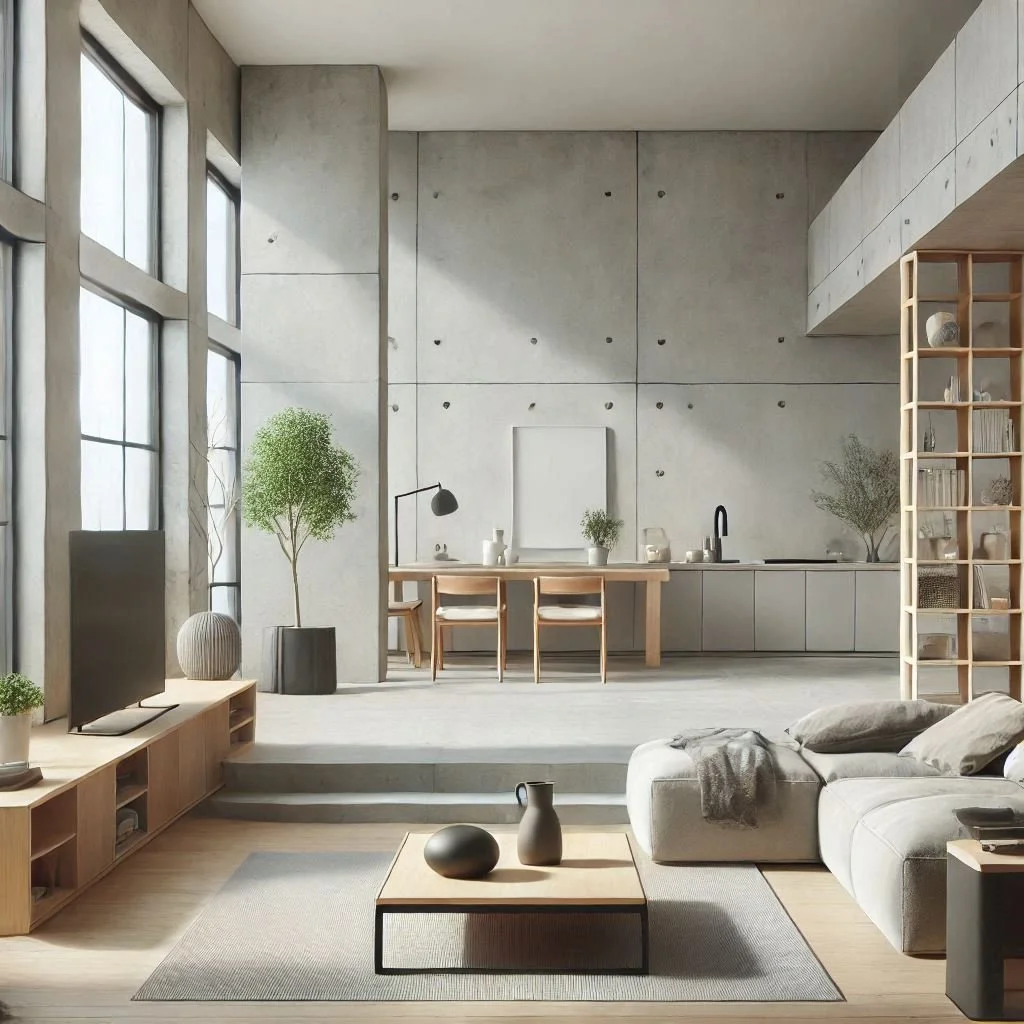Intentional Design and the Art of Simplicity: How to Choose Objects that Truly Matter in a Minimalist Lifestyle

The Importance of Intentionality in Design
In today’s fast-paced world, we are constantly bombarded with an array of choices that can lead to overwhelming clutter in our lives. Intentional design presents a refreshing alternative, guiding us to select items and elements that genuinely enhance our daily experiences. This design philosophy transcends mere aesthetics; it embodies a deeper, meaningful approach to how we curate our environments. By prioritizing elements that foster simplicity and purpose, we can create spaces that resonate with clarity.
To fully embrace a minimalist lifestyle, consider adhering to these foundational principles:
- Purpose Over Extravagance: Focus on choosing objects that serve clear, practical functions in your daily life, such as a well-designed chair that provides comfort while reading or an essential kitchen gadget that makes meal preparation more efficient.
- Quality Over Quantity: Aim to invest in a select number of high-quality items, for instance, a timeless piece of furniture made from sustainable materials that will last for decades rather than cheap, disposable alternatives that require frequent replacement. The impact of purchasing a single, premium product is often far more significant than that of accumulating multiple low-quality items.
- Sentimental Value: Curate your surroundings by surrounding yourself with objects that evoke positive memories. For example, a photograph from a cherished family vacation or a handmade ceramic mug given by a friend can imbue warmth and meaning into your space.
As you navigate through the myriad choices available, understanding the influence of your selections becomes crucial. Each object should not just occupy physical space but should also contribute meaningfully to your environment, enhancing your overall quality of life.
Exploring intentional design reveals the transformative power of curated spaces on our emotional well-being. When the elements in our homes reflect our personal tastes and functional needs, the result is a harmonious space that inspires tranquility and purpose. For example, many individuals who adopt a minimalist approach report reduced stress levels as their living spaces become clearer and more open, allowing for better focus and creativity.
The journey towards meaningful minimalist living is not about merely discarding items; it involves a thoughtful evaluation of what truly matters to you. Engaging in this process can lead to a more fulfilling lifestyle where each choice is deliberate, and every object tells a story. By cultivating this intentional approach, you can break free from consumerist pressures and create an environment that is as unique and valuable as you are.

In this exploration, we will uncover various techniques for discerning what truly holds value in your life. By emphasizing thoughtful choices over impulse buys, you can embark on a rewarding path towards simplicity. Step into this methodology, and discover how a few well-chosen items can profoundly alter your surroundings and mindset, allowing for a life rich in meaning and intent.
DIVE DEEPER: Click here to discover more
Understanding the Foundations of Minimalism
Minimalism is not merely a trend; it’s a lifestyle choice that encourages individuals to strip away the excess and focus on what truly matters. At its core, minimalism is about making conscious decisions regarding the objects we invite into our lives. In the spirit of intentional design, it invites us to reflect on our possessions and thoughtfully select those that align with our values and enhance our experiences.
To embark on your minimalist journey, consider these strategies that not only simplify your environment but also enrich your life:
- Evaluate Your Needs: Take time to assess what you genuinely need in your daily life versus what you think you need. This may involve creating a list of must-have items and differentiating them from those that merely fill space. For instance, a versatile pair of shoes that can be worn for various occasions holds more value than several pairs that see little use.
- Embrace Multi-functionality: Select items that can serve multiple purposes. A sleek, stylish coffee table that doubles as a storage unit, for example, allows for functional use while reducing clutter. By focusing on multifunctional pieces, you can achieve a streamlined aesthetic without sacrificing practicality.
- Be Mindful of Trends: While trends can seem appealing, they often lead to purchasing items that do not have lasting value. Instead, prioritize timeless designs that reflect your personal style and can adapt to changing tastes. Invest in enduring pieces that you will love for years to come rather than fleeting fads.
- Engage in Regular Reflection: Implement a practice of periodically reviewing your possessions. As life circumstances change, so do your needs. Regularly assessing your belongings can help maintain a clutter-free environment and ensure that all items align with your current lifestyle.
Through an intentional approach to design, it becomes easier to identify objects that resonate with our deeper values. This awareness enables individuals to curate spaces that not only look beautiful but also foster a sense of belonging and comfort. When we consciously select each element within our environments, we turn our homes into personalized sanctuaries that reflect our identities.
Moreover, embracing the art of simplicity allows for a significant shift in mindset. Rather than viewing possessions as mere items, they take on a narrative of purpose and relevance. Each object tells a story—be it a cherished book that inspires your morning routine or a handmade vase that reminds you of travels far away. By surrounding yourself with meaningful possessions, your space transforms into a reflection of your personal journey.
As we explore these tenets of intentional design, it becomes clear that each thoughtful selection can significantly contribute to a more enriched and purposeful existence. A minimalist lifestyle is about quality of life, not merely quantity of things, and by adopting this philosophy, we open ourselves to new possibilities. Stay tuned as we delve further into the principles that guide intentional choices and discover how simplicity can illuminate our lives.
| Category | Characteristics |
|---|---|
| Intentional Design | Focuses on essential elements and functionality, eliminating unnecessary clutter. |
| Quality Over Quantity | Encourages investment in meaningful items that enhance daily life, rather than accumulating possessions. |
| Emotional Connection | Selects objects that resonate on a personal level, fostering an environment of tranquility. |
| Timeless Design | Prioritizes classic aesthetics that withstand trends, contributing to a sustainable lifestyle. |
The shift towards Intentional Design is not merely about aesthetics; it reflects a deep desire to simplify our lives. In a world overwhelmed by consumerism, this approach allows individuals to create environments that promote well-being. By focusing on quality over quantity, one can make conscious choices that not only serve practical purposes but also contribute to personal joy and satisfaction. Moreover, the emotional connections formed with selected items are profound. Every piece chosen for the home becomes a symbol of treasured memories or aspirations, turning spaces into sanctuaries. As time progresses, embracing timeless design principles—seeking pieces that narrate stories and evoke feelings—becomes increasingly critical. This way, every room in the house can tell a compelling story while remaining an organized, clutter-free retreat. By embarking on this journey of intentionality, individuals are invited to re-evaluate their current possessions, focusing on what truly matters and eliminating distractions. The result is not just a minimalist space, but a reflection of one’s values and priorities, ultimately leading to a lifestyle rooted in simplicity and authenticity.
DISCOVER MORE: Click here to uncover what truly matters
Curating Your Space with Intentional Objects
Choosing objects that matter is not just about reduction; it’s about enhancement. Intentional design empowers us to cultivate a space that harmonizes with our lives while reflecting our aspirations. By focusing on the significance of each item, we can navigate the complexities of modern living while embracing the beauty of simplicity.
To effectively curate your space, consider the following guiding principles that will help in selecting meaningful and intentional objects:
- Prioritize Quality Over Quantity: Invest in fewer, high-quality items that will stand the test of time. For example, instead of buying a cheap desk that may require replacement in a year, seek out a sturdy, well-crafted desk made from sustainable materials. Not only do quality pieces reduce waste, but they also encourage deeper appreciation for the items you own.
- Create a Space for Reflection: Dedicate areas in your home that celebrate your journey—a gallery wall featuring artwork from local artists or photographs from significant life events, for instance. These displays are not just decor; they are intentional narratives that provide comfort and inspiration daily.
- Utilize Natural Elements: Nature often embodies the essence of simplicity. Incorporating plants or natural materials like wood, stone, or fibers into your living environment can enhance overall well-being. Studies suggest that living greenery can improve air quality and boost mood, reinforcing the idea that the objects around us can significantly impact our experience of a space.
- Consider the Emotional Connection: Reflect on the memories and experiences tied to your belongings. A family heirloom or a handcrafted item from a special trip carries emotional weight that far exceeds its physical appearance. When we hold on to items with stories behind them, they transcend mere objects and become integral parts of our identities.
As you engage with these principles, it’s essential to remember that each choice contributes to the larger tapestry of your minimalist lifestyle. The process of intentional design should be enjoyable and liberating, enabling you to remove barriers created by excess and be truly present in your surroundings.
Moreover, the minimalist mindset extends beyond physical possessions. It permeates our routines and decision-making processes. By embracing simplicity, we begin the art of discerning what truly enhances our day-to-day life. Evaluate aspects such as your schedule, commitments, and digital clutter—question what aligns with your core values. This newfound clarity will free up time and mental energy for experiences that resonate more deeply.
In America, many individuals are adopting the minimalist approach not only to aestheticize their homes but to achieve a richer life experience in the hustle and bustle of urban living. The KonMari Method, popularized by Marie Kondo, embraces this ideology, as she encourages individuals to keep only those items that “spark joy.” This philosophy has spread beyond personal spaces and has found its voice in interior design trends across the country, focusing on functional beauty that celebrates the essence of simplicity.
Ultimately, the goal of intentional design is to foster environments that serve our needs and enhance our well-being. By carefully selecting objects that merit a place in our lives, we can elevate our surroundings into spaces that inspire and uplift us every day. Through this journey of simplification, we can redefine our relationships with our possessions, paving the way for a more authentic, contented existence.
DISCOVER MORE: Click here to learn how to say no and boost your productivity
Embracing the Journey of Intentional Design
In conclusion, the journey towards a minimalist lifestyle anchored in intentional design invites us to redefine our relationship with the objects we choose to surround ourselves with. As we’ve explored, this approach transcends mere decluttering; it lays the groundwork for a life rich in meaning and purpose. By prioritizing quality, nurturing emotional connections, and creating spaces that reflect our values, we foster an environment that not only simplifies our lives but also enhances our well-being.
Incorporating natural elements and developing areas for personal reflection empowers us to make conscious choices about the space we inhabit. Each intentional selection provides a canvas upon which we can craft an authentic narrative that resonates deeply within us. Embracing the principles of minimalism can liberate us from the noise and excess that often overwhelms modern living, allowing for a clearer sense of identity and direction.
As we navigate this evolving landscape of intentionality, it’s essential to remember that simplicity is an art form that requires practice and patience. Whether it’s implementing the KonMari Method or exploring our own methods of living intentionally, the core principle remains the same: focus on what truly matters. By doing so, we unlock the potential to cultivate not just our spaces, but our lives—transforming our surroundings into sanctuaries of inspiration. Through this commitment to intentional design, we open ourselves to a life where each object and experience adds significant value—leading to a more deliberate, joyful existence.


